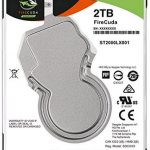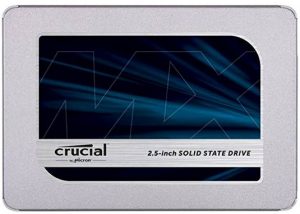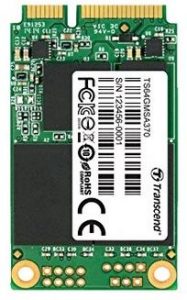=SATA, IDE PATA, SCSI/SAS Hard Disk (HDDs) & SATA & M.2 SATA/MVMe Solid State Drives (SSDs)





Visit Page 3 – Useful information on hard disk and SSD drives
Useful content on the web
Using the Windows ChkDsk drive diagnostic tool to check for bad sectors
I would not use ChkDsk to run a check on an SSD. The link below tells us that a particular Windows update using ChkDsk damages the file system on SSDs. Therefore a future update might do likewise. In any case, SSDs identify and isolate bad sectors that they detect automatically. The SSD manufacturer, Crucial, provides its free Crucial Storage Executive that “helps optimize the performance of your Crucial SSD.” Other manufacturers of SSDs, such as Samsung and WD, also provide tools for their drives.
1 – Windows 10 20H2: ChkDsk damages file system on SSDs with Update KB4592438 installed –
https://borncity.com/win/2020/12/18/...
2. – My Crucial SSD has Bad Sectors –
https://uk.crucial.com/support/articles-faq-ssd/my-ssd-has-bad-sectors
CONTENTS
This section of this website provides detailed information on the various types of hard disk drives (HDDs) and SSD drives – internal, external and portable drives – IDE PATA (old technology), SATA (current technology for both HDDs and SSDs), SCSI/SAS drives (old and new technology, respectively) and the latest-technology solid state drives (SSDs). The categories of these drives are internal – installed inside the computer – external and portable. The Contents menu below gives a good idea about the information provided on each page.
This page – Page 1. – Click the link to go to that information on this page:
1. – The installation of IDE PATA and SATA hard disk and SSDs
2. – Hard disk drive / SSD / CD-DVD drive problems and solutions
3. – External hard disk drives and USB flash drives
4. – How to find out which hardware and software is installed on a Windows computer
Page 2: Disk Management and Device Manager in Windows 7/8.1/10
Page 3: Useful information on hard disk (HDD) and SSD drives – 2.5-inch & M.2 (SATA and NVMe PCIe cards)
Page 4: SSDs – Performance, installation and reviews
Page 5: SATA-to-IDE adapters, SCSI/SAS drives and the Crucial SSD Buying Guide
Page 6: Current HDD and SSD capacities, the 2.19 barrier, NTFS and GPT file systems and 3TB SSDs reviewed
Page 7: IDE and SATA hard disk drives || BIOS/UEFI update might be required for an SSD to work without memory corruption issues
Page 8: How to find out if a PC can support an SSD || SSD Tweaker || Smart Response Technology (SRT) || TRIM and Firmware Updates
Page 9: SATA versions and backwards compatibility – How hard disk and SSD drives work
Page 10: How to make sure that an SSD drive is set up optimally in Windows 7 & 8.1 & 10 to increase its limited lifespan
Page 11: How best to wipe the data on hard disk and SSD drives
Posts on hard disk and SSD drives on this website
POST: Use the features of the Western Digital SSD Dashboard
POST: Cause of a slow M.2 SSD on AMD-based motherboard
POST: A serious SSD encryption issue in Windows 10 when using Bitlocker encryption software
POST: Using my PC is difficult – Hard drive hogged for 15 to 20 minutes at startup
POST: Replace a dead hard disk drive with a laptop model
POST: How to replace a dead laptop hard disk drive with another hard drive or an SSD
Beware of fake SSDs and flash drives for sale on Amazon and other vendors
There are plenty of fake internal and external SSDs and USB flash drives for sale on Amazon. They may work but they are scams that use old components and do not have the advertised capacities. To avoid buying one check the prices of the capacities on sale by the name brands such as Corsair, Sandisk, Seagate, Western Digital, Adata, Transcend, Sabrent, SilverStone, Intel, SK Hynix, Team, etc. If the SSD is very cheap compared to the offerings of the major brands for a particular capacity, it will always be a scam. You can also check the manufacturers’ websites to compare prices. What many people are not aware of is that it can be cheaper to buy directly from the manufacturer instead of a from vendor such as Amazon.
The capacities of flash drives double. USB flash drives are available that have capacities of 8GB, 16GB, 32GB, 64Gb, 128Gb, 256GB, 512GB, 1TB, 2TB, 4TB and 8TB. There is currently no capacity larger than 8tb (October 2022) and no such capacities as 3TB or 10TB, so if those capacities are listed, they are scams..
PCI Express (PCIe) backwards compatibility
PCIe 4.0: What’s New and Why It Matters –
“PCIe is also backward compatible. If you have a PCIe 4.0 graphics card [or a PCIe NVMe SSD] you can use it with a motherboard designed for PCIe 3.0; however, the card’s available bandwidth would be limited to the capabilities of PCIe 3.0. Conversely, a PCIe 3.0 card can fit in a PCIe 4.0 slot, but again it would be limited by PCIe 3.0.”
In other words, a PCIe 3.0 card can only have the capabilities of a PCIe 3. 0 device in a PCIe 4.0 slot on the motherboard.
https://www.howtogeek.com/424453/pcie-4.0-whats-new-and-why-it-matters/
eMMC storage is not an SSD
If you come across a cheap laptop or tablet that uses eMMC storage that holds the operating system (Windows 10, Linux, Android), it is not a type of SSD drive, it is an eMMC chip soldered into the device’s motherboard. That chip does not have a controller and does not use firmware that hard disk drives and SSDs use.
Wikipedia: “Almost all mobile phones and tablets used this form of flash for main storage up to 2016, in 2016 UFS started to take control of the market. The latest version of the eMMC standard (JESD84-B51) by JEDEC is version 5.1 released February 2015, with speeds rivaling discrete SATA-based SSDs (400 MB/s).”
Laptops that use eMMC storage can run Windows 10 and Microsoft Office very well. A good example is the
_________________________________
The installation of IDE PATA and SATA hard disk and SSDs
Installation information of all hardware components and installing Windows is provided in the Build Your Own PC section, in the Hardware menu.
Installing SATA hard disk drives, SSD and CD/DVD/Blu-ray drives –
https://www.pcbuyerbeware.co.uk/hardware/build-your-own-pc/11/
_________________________________
Hard disk drive /SSD/CD/DVD drive problems and solutions
The Hard Disk Drive and SSD Problems and CD/DVD Drive Problems sections of this website provide solutions to many common and less common problems with those drives. Taken together, you should be able to find all of the information you need to know about computer drives and their problems in the above-mentioned sections of this website.
Free tools for HDD and SSD drive diagnostics, health and temperature information
Crystal Disk Info – https://crystalmark.info/en/software/crystaldiskinfo/
HWIFO – Diagnostic software for 32 and 64-bit Windows – https://www.hwinfo.com/download/
_________________________________
External hard disk drives and USB flash drives
External hard disk drives and USB flash drives have their own pages in the Hardware menu – Hard Disk and SSD Drives => External Hard Disk Drives => USB Flash Drives. Network Attached Storage (NAS) devices are dealt with in the the Wired and Wireless Networking pages, also in the Hardware menu.
_________________________________
How to find out which hardware and software is installed on a Windows computer
If you need information on what is installed on a computer, the Belarc Advisor from belarc.com is a free tool (look under Free Download on its website) that identifies a Windows computer’s hardware (motherboard, graphics card, hard disk drive(s), DVD drive, etc.) and software (version of Windows, applications, etc.) and even software licences, including the Windows Product Key, which is always required when reinstalling Windows. Look on the left hand side of the Belarc Advisor screen for “Software Licenses”.